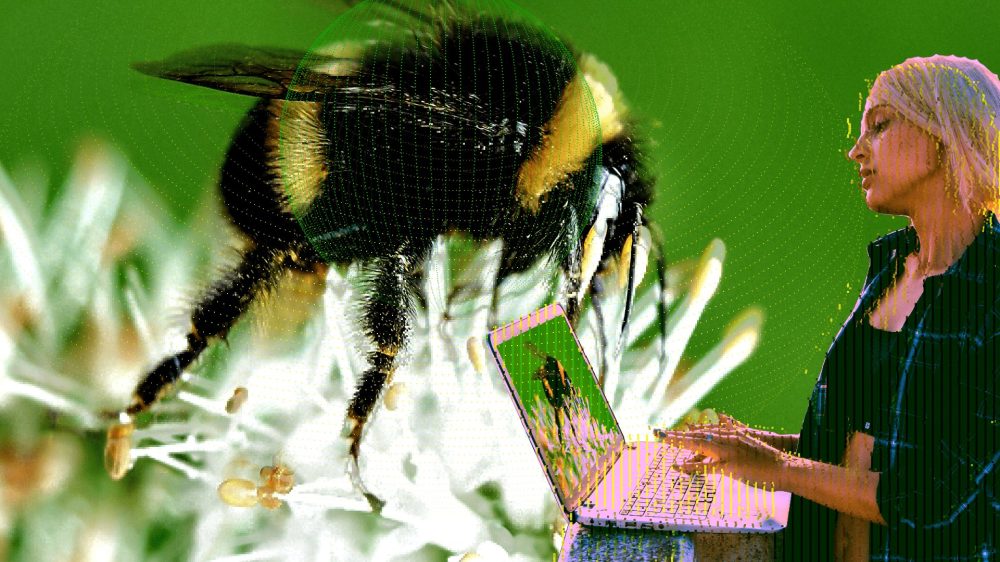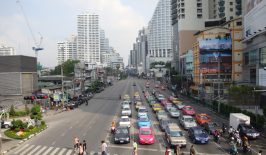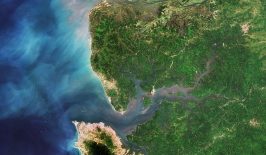Science doesn’t need to take place in a laboratory. Smart technologies such as sensors, satellites and computer algorithms have enabled researchers and scientists to view our world with an unprecedented level, whether it’s investigating air pollution, mapping tree and animal populations, or even responding to natural disasters. However, there are still many incidents in which boots – and eyes – are needed on the ground. For one thing, even the smartest smart sensor cannot install itself.
This is why thousands of citizens voluntarily collect, measure, map, photograph and document data to aid in the research of a whole host of issues, whether its biodiversity, pollution or climate change. As individuals, each assignment is not particularly time consuming and usually only demands a small space in one’s environment or a short session in front of a computer screen. Still, combined together this citizen science can be instrumental for organisations such as NASA and the World Wildlife Fund.
Boosting Science Thanks to Digital Tools
The concept of citizen science is not entirely new – on the contrary. The first modern example of scientists working together with citizens took place in the USA as early as 1900. At that time, the National Audubon Society called for the first Christmas Bird Count. Since then, the bird count has been carried out every year and the population of certain species has been recorded.
However, digitalisation has given this type of research cooperation a boost. The multifunctionality of smartphones and the open access movement makes it possible for more people than ever before to participate in science. In most projects, apps and platforms are the interface on which data is collected or viewed and analysed online, regardless of time and place.
Making Science Tangible
But how helpful is it really when citizens feed data into platforms and apps on behalf of researchers? For lay researchers, observing and counting animals, trees or clouds certainly yields a lot of new experiences and insights about our planet. At the same time, a greater collective wealth of experience is created when the crowd participates. And if the research activity goes beyond mere data collection (crowdsourcing) by actively shaping the research process, problems with the method and the best solutions can be uncovered.
In “Participatory Science”, for example, the population is involved in the development of the question and problem. In “Extreme Citizen Science”, amateurs participate in all steps of a research project. At the level of the researchers, successful involvement of citizens can ensure that the data sets increase enormously, that differentiated results are obtained and that new perspectives are gained.
In this way, citizen science not only contributes to more democratisation and transparency in research, but also to an increased and novel dialogue between science and society.
How to Get Involved
Interested in becoming a citizen scientist? Here are some examples of projects to get involved in.
Help NASA Map Coral Reefs
When Nasa developed “fluid lensing” technology, they created an incredible tool that was almost too effective. The technology allows NASA to see beneath the waves in unprecedented detail, allowing them to better catalog and inspect coral reefs. But when drones equipped with fluid lensing technology flew over coastlines, they created a data set that would take humans 200 million years to manually inspect. NASA’s Pleiades supercomputer can help cut this down, but even this needs training before it can do the job. This is where thousands of gamers – both young and old – come in. NASA developed a fun, simple mobile game in which gamers colour-code species of coral. Although these citizen scientists might simply be occupying some time, they are also simultaneously training NASA’s supercomputer to make more accurate observations.
Decoding the Conflict in Darfur
A bloody and violent conflict in the Darfur region of Sudan had been raging since 2003, impacting the lives of 3 million inhabitants. Finding out the real conditions and destruction on the ground is nigh impossible with traditional means, but satellite and aerial photography provides a new vantage point. But, when Amnesty International started to sift through the images they discovered they simply had too much. Cue the Decode Darfur program, which saw online volunteers become deputised into Amesty’s research. After completing a short online tutorial, volunteers work to identify the differences between images, allowing Amnesty to track the destruction of the war over the region.
Counting Animals in Africa
Camera traps and sensors have become a valuable tool in the kit of any wildlife researcher. As they become more efficient, they have resulted in hundreds of thousands of images, videos and audio recordings all of which may contain important information about an animal’s population, behaviour and health. But, they might also contain useless footage of a falling branch. To separate the wheat from the chaff, conservationists have turned to technology such as Project Zamba – artificial intelligence which is working to count and identify animals. But, like NASA’s Pleiades, Zamba needs training. To help it along, over 15,000 volunteers have been helping to catalog hundreds of hours of footage through projects such as Chimp & See. Volunteers flag a video if it contains footage of a specific animal, which helps Zamba learn for the future. Currently, citizen conversationalists have made 124,000 classifications and the project is 81 percent complete.
Simple Sensors for Counting Traffic
Being a citizen scientist can be as simple as owning a window and an internet connection. For example, the WeCount project has developed a small, unobtrusive sensor for volunteers to place in their street facing windows. The sensor can then detect the number, speed and type of vehicles that pass by, before transmitting that data to a cloud which provides it free-of-charge to interested NGOs or institutions. It is hoped the data can be used for a whole host of research, including road safety, congestion and pollution.
Giving Grassroots Movements the Data They Need
Some smart technology also has the potential to turn citizen scientists into citizen campaigners. For example, one Dutch NGO Making Sense has produced and distributed an open source sensor which can easily be produced and installed in peoples homes and offices. The sensors can then take a wide range of readings, including noise levels, pollution and even radioactivity. This open source data can then be used to embolden local grassroots movements by giving the data they need to engage in the local political and eonvironmental process.






